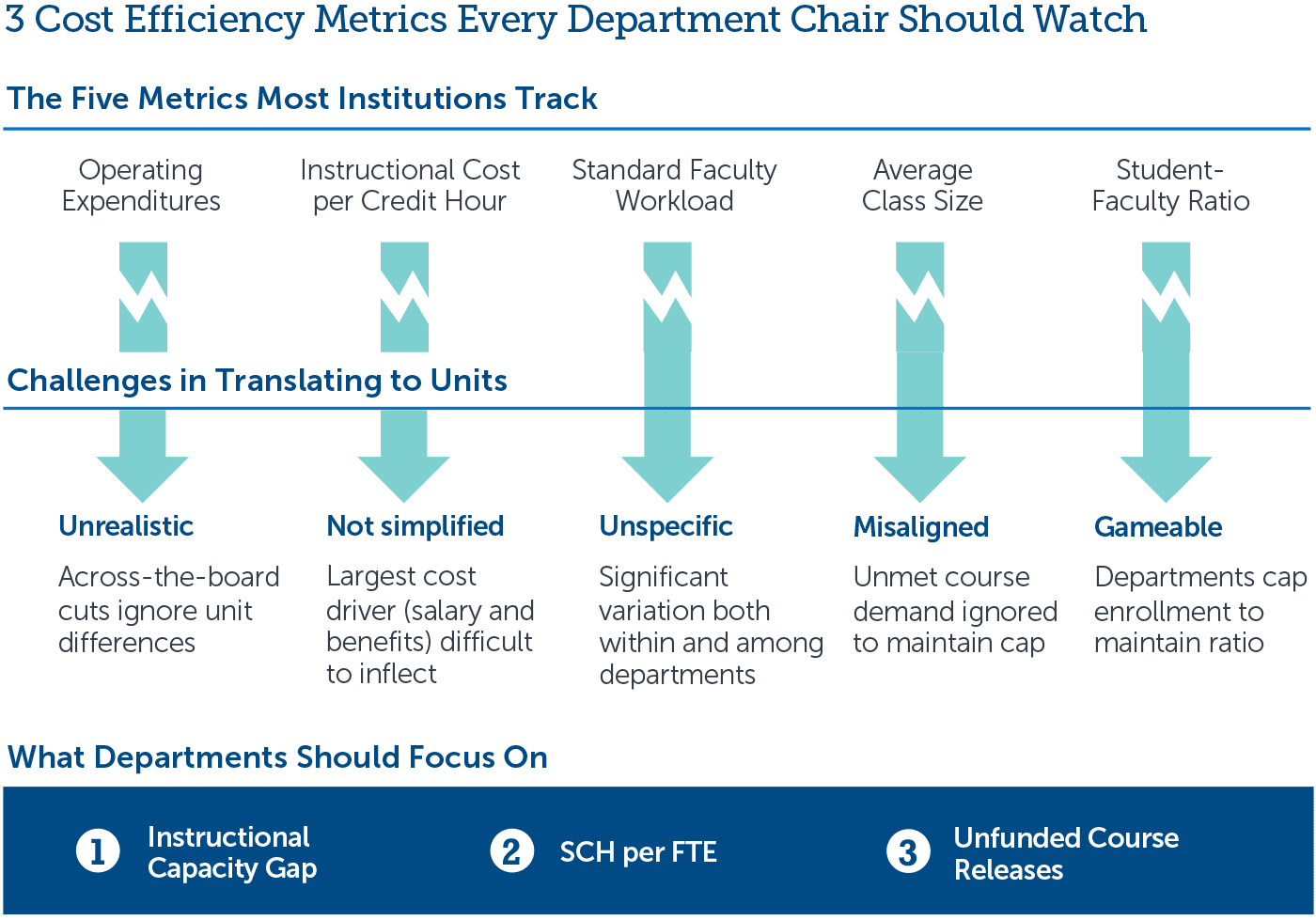Align Workloads and Schedules with Student Demand
Instructional costs, primarily faculty compensation and benefits, are the largest single budget line item for nearly every university—and they are on the rise. For most institutions, these costs are largely fixed, making resource flexibility a significant challenge in an era of declining per-student funding and tuition revenue. Focusing on smarter and more efficient allocation of your current instructors is often the best way to achieve immediate benefits—for both students (often competing for seats in high-demand sections) and the bottom line (helping generate more student credit hours without adding part-time instructional staff).

Unpack the drivers of instructional costs
To better align resources with student enrollment patterns, you’ll need support from deans, department chairs, and other academic leaders. The first step is to address common misconceptions about institutional finances and equip your team with a better understanding of the drivers of instructional costs–including the size and frequency of course and section offerings, whether classroom spaces are assigned to appropriately-sized sections, curricular complexity, and faculty workloads.

Now that you've read about the need for unit-level cost analyses

Pick the right metrics to monitor instructional efficiency
Many of the measures used to gauge cost-efficiency at the institutional level are ineffective for monitoring unit-level costs and performance. Total personnel costs, the student-faculty ratio, and average class size, for example, fail to reflect common inefficiencies at the departmental or course level.
Instead, departments should focus on three key analyses that direct specific actions and align with broader institutional goals: the instructional capacity gap, student credit hours per faculty FTE, and unfunded course releases. These analyses should guide departmental planning, budgeting, scheduling, and ongoing workload conversations at both the unit and college level.


Identify the greatest opportunities for resource and workload reallocation
Every institution has unique challenges relating to student demand and instructor capacity, but there are telltale signs of resource issues that can help you target areas for focus. How carefully are you measuring section fill rates, course enrollment, course completion rates, curricular complexity, and faculty course loads? And how effective are your deans and chairs at responding to changes in demand?


Equip academic leaders to make smarter workload decisions
Most decisions that impact capacity are made at the department level, from annual choices about course capacity and faculty workload to longer-term planning decisions about curricular requirements and student major pathways. Academic affairs leaders need to work with department chairs to collect accurate student demand data, analyze faculty workload data beyond the standard teaching load, and set program-level strategy for increasing capacity in low-enrollment areas.

Now that you've read the best practices
- Identify cost efficiency goals and key departmental performance indicators
- Use online courses to increase capacity with these strategies
- Ensure section size caps are set appropriately to ensure both quality and efficiency
- Bridge cross-communication between budget offices and academic units on campus
- Discover four ways to contain academic costs
- Explore the Academic Innovation Resource Center

This resource requires EAB partnership access to view.
Access the roadmap
Learn how you can get access to this resource as well as hands-on support from our experts through Strategic Advisory Services.
Learn More